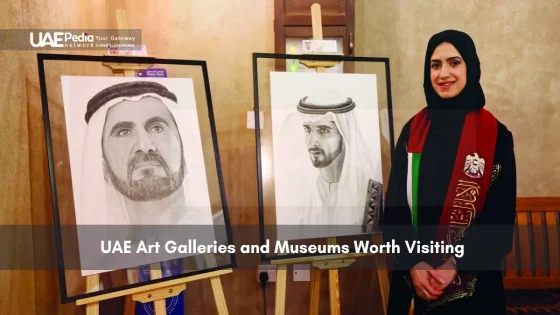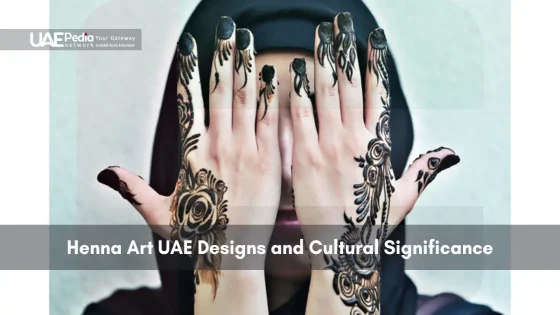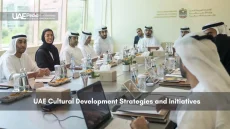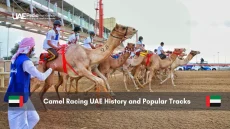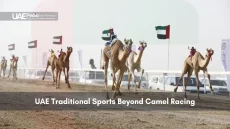Did you know the Arabian Peninsula shelters over 10 UNESCO World Heritage Sites—with some of the most innovative preservation work happening right here? From Al Ain’s 4,000-year-old falaj irrigation systems to Abu Dhabi’s hypermodern cultural district Saadiyat Island, the United Arab Emirates crafts a unique bridge between past and future.
This isn’t just about restoring old forts (though you’ll find breathtaking ones like Qasr Al Hosn). It’s about living traditions—the warmth of Emirati hospitality, the rhythm of pearl-diving songs, and the vibrant threads of family solidarity woven into daily life. Communities here don’t treat history as a museum exhibit. They breathe it.
Government initiatives like the Ministry of Culture and Youth’s digitization projects ensure stories aren’t lost to time. Meanwhile, festivals resurrect ancient crafts, and architecture blends wind towers with glass skyscrapers. Even UNESCO nods to this balance, recognizing both archaeological marvels and intangible cultural heritage.
- Global recognition: Explore UNESCO-protected sites alongside grassroots efforts keeping traditions alive.
- Cultural heartbeat: Discover how values like tolerance and kinship shape the nation’s identity.
- Innovation meets tradition: See how tech and community action preserve legacies for future generations.
Unveiling the Cultural Treasures of Heritage UAE
Imagine sipping cardamom-spiced coffee from a dallah while listening to stories of Bedouin traders—this is how Emirati culture wraps you in its embrace. The nation’s identity blooms from ancient roots, blending desert resilience with coastal ingenuity.
The Historical Evolution of Emirati Culture
Long before skyscrapers dotted the horizon, communities thrived around Al Ain’s oases. UNESCO World Heritage recognizes these 4,000-year-old settlements as proof of early agricultural innovation. Sharjah earned its title as “Cultural Capital of the Arab World” by reviving poetry slams and calligraphy workshops.
Three pillars shaped modern Emirati life:
| Era | Cultural Marker | Modern Echo |
|---|---|---|
| Bronze Age | Falaj irrigation | Al Ain’s date palm festivals |
| 18th Century | Pearl diving | Louvre Abu Dhabi’s maritime exhibits |
| 1970s Onward | Tribal alliances | National Day parades |
Key Features: Hospitality, Tolerance, and Community
You’ll taste tradition in every bite of harees (wheat-and-meat porridge) shared during Ramadan. The majlis—a gathering space—still hosts debates over karak tea. As one elder in Abu Dhabi told me: “We measure wealth by open doors, not bank accounts.”
This spirit fuels initiatives like the Emirate Abu Dhabi Culture Summit, where global artists collaborate with local weavers. From Al Dhafra Camel Festival to Dubai’s Design Week, the past dances with the future—one resilient thread at a time.
Government Initiatives and Community Efforts in Preserving Heritage
Ever tasted camel milk ice cream while watching a falconry demonstration? That’s the vibe at Abu Dhabi’s Sheikh Zayed Heritage Festival—where ancient traditions meet Instagram-worthy moments. Across the nation, government-led cultural programs partner with grassroots groups to turn history into hands-on experiences.
Festivals, Heritage Villages, and Clubs
Qasr Al Hosn Festival transforms Abu Dhabi’s oldest stone building into a time machine. Artisans demonstrate sadu weaving under palm-frond shades, while kids race wooden dhows in mini-canals. Over in Dubai, the Emirates Heritage Club hosts desert camps where you’ll learn:
- How to roast coffee beans in a sand furnace (hint: patience is key)
- The art of composing Nabati poetry—think Bedouin rap battles
- Why henna patterns tell stories older than skyscrapers
Museums and Iconic Mosques as Living Legacies
Step into Sharjah’s Heart of the Emirates mosque at sunset. The call to prayer echoes through geometric arches, while guides explain how 14th-century ventilation designs inspired modern eco-architecture. As one curator told me: “We don’t display artifacts—we resurrect conversations.”
Al Bidya Mosque—the country’s oldest—hosts Friday markets where potters sell wares beside 3D-printed replicas of archaeological finds. Meanwhile, Louvre Abu Dhabi’s “Living Traditions” exhibit pairs pearl divers’ songs with VR underwater expeditions. History here isn’t dusty—it’s dancing.
Iconic Historical and UNESCO World Heritage Sites in the United Arab Emirates
What if you could walk through a 5,000-year-old garden where date palms still drink from ancient waterways? That’s Al Ain’s Hili Archaeological Park—a living museum where Bronze Age irrigation channels called falaj systems still feed crops today. This oasis city isn’t just sand and stories—it’s a UNESCO World Heritage Site humming with Neolithic secrets.
Al Ain: From Neolithic Roots to UNESCO Recognition
At Bidaa Bint Saud, you’ll find tombs older than Egypt’s pyramids. Archaeologists recently uncovered a 3,000-year-old falaj network here—proof of engineering genius long before modern skyscrapers. “These channels weren’t just about survival,” says a local historian. “They mapped community trust—water shares divided by moonlight.”
Other Heritage Sites and Preservation Challenges
Beyond Al Ain, the Emirates hides gems like Umm an-Nar Island’s circular tombs—now a UNESCO candidate site. But preserving these treasures isn’t easy:
- Desert winds erode 4th-century forts in Fujairah
- Urban expansion threatens Sharjah’s coral-stone homes
- Rising humidity damages palm-frond archives in Ras Al Khaimah
Incorporating Modern Efforts with Traditional Values
Abu Dhabi’s Department of Culture and Tourism uses 3D scans to protect fragile sites while training Emirati youth in traditional masonry. In Sharjah, augmented reality apps let you “rebuild” collapsed wind towers using your phone. As one conservator joked: “Our ancestors built with date-palm mortar. We add Wi-Fi.”
The balance? Tough but vital. At Al Ain’s newly opened House of Artisans, elders teach teens how to weave palm leaves into fishing traps—the same way their great-great-grandparents did. Because here, every stitch is a story.
Reflecting on the Enduring Legacy of UAE’s Cultural Heritage
Every sunset over the desert tells a story here—one where ancient irrigation channels hum alongside augmented reality exhibits. From UNESCO World Heritage-listed oases to Abu Dhabi’s tech-powered museums, the nation’s past pulses in rhythm with tomorrow.
Communities stitch tradition into daily life through festivals celebrating camel races and palm-weaving workshops. Government initiatives—like digitizing oral histories—ensure even whispers from Bronze Age traders reach modern ears. At sites like Al Ain’s Hili Park, you don’t just see history. You touch it.
This legacy thrives because people keep it alive. Teens snap selfies while learning sadu weaving. Architects blend wind towers with solar panels. Every restored fort or reimagined majlis becomes a bridge between generations.
Ready to walk that bridge? Check event calendars for cultural markets or moonlight storytelling sessions. Follow local artisans on social media to watch traditions evolve in real time. The Arab Emirates’ story isn’t locked in glass cases—it’s written daily in shared meals, craft fairs, and VR-enhanced museum tours.
Pack your curiosity and step into this living narrative—your journey through time starts now.
Al Ain earned UNESCO status for its ancient oases, Bronze Age tombs, and falaj irrigation systems dating back 3,000 years. Think of it as an open-air museum showcasing how desert communities thrived through innovation—like the still-functioning water channels at Hili Archaeological Park.
Events like the Sheikh Zayed Heritage Festival transform history into hands-on experiences—from camel races to date-palm workshops. You’ll taste saffron-infused luqaimat (sweet dumplings), watch artisans weave sadu textiles, and hear folktales passed down through generations.
Absolutely! Head to Bidaa Bint Saud in Abu Dhabi, where Iron Age tombs overlook a caravan route. Or visit Mleiha Archaeological Centre in Sharjah, where you’ll see 130,000-year-old tools and climb a 2,000-year-old fort—proof the region’s story began long before skyscrapers.
These restored forts aren’t just photo ops. They’re living classrooms—watch craftsmen shape palm fronds into fishing traps, or join a coffee ceremony where steaming gahwa symbolizes Emirati hospitality. It’s history you can touch, taste, and share.
Balancing rapid urbanization with site conservation tops the list. Projects like Al Jazirah Al Hamra’s pearl-merchant houses in Ras Al Khaimah show how adaptive reuse—turning old homes into art galleries—keeps communities rooted while embracing progress.

